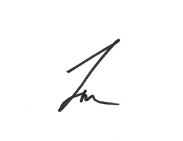The third of five fundamental questions:
This month, A Cause Greater continues its new blog series called “Five Fundamental Questions That Unlock Your Organization’s Future Value.” Over the last two months, we’ve unpacked the first two: naming our purpose and naming our core values, those ingrained principles that guide all our organization’s actions.
This month, we will stand on our answers to those questions and pose the third fundamental question: What is our vision for the future?
In our rapidly changing world, we have to ask and answer this question more frequently than we believe necessary. We like to hold onto what is present, what is working, what we know, and what we can count on. But as leaders, we are called to reach for what is not present, for what is emerging, for what is unseen and around the corner.
So how do we take a step back from the day-to-day of working in our organization and begin working on our organization? How can we stop, pause, and take a deep breath to see what is ahead? Again, this is fundamental, which means we have to practice it, regularly and over long periods of time.
Earlier this year I was working with an organization to help them frame a bold vision for the future of their organization. As we began designing their visioning process, it became clear that over time their vision had narrowed. So, I asked, “Whose voices, if they were able to share their perspective, would make all the difference in the world to your organization?”
Asking this question allows us to, as Otto Scharmer calls it, “sense with fresh eyes” and perceive an emerging vision based on important publics to our organizations, such as customers, clients, donors, stakeholders, board members, or shareholders. This process also has the wonderful attribute of engaging people in the process of visioning itself.
It allows all involved to climb into another person’s skin and walk around in it, as Harper Lee wrote in To Kill a Mockingbird.
Capturing these perspectives can help paint a picture of what is to come, what is just beyond our reach, and what might happen if we led in a certain direction. Scharmer calls this “crystallizing the vision and intention.” This is why I often describe an organizational vision as a picture of what is to come. Not a statement, a picture. The future is far too complex to be able to capture it in ten to fifteen words.
Our final step in answering this question is to consider how this painting, this vision of what we want our organization to become, creates the future value that we will occupy in time. From a financial perspective, what does our future balance sheet look like in two to three years? What new programs do we need to develop or enhance that can create value for our customers twelve months from now?
This is why understanding future value is so very important. Your vision for the future begins to create that future value today.
Now that we have painted our vision for the future, our next task is to understand what will propel us towards that future and what will impede us along the way. That’s next month’s question.
Until then, if you would like to talk more about how to cast a bold vision for your organization, please feel free to email me at lons@designgroupintl.com.
Walking alongside you,
 Lon L. Swartzentruber
Lon L. Swartzentruber
CEO, Design Group International
Senior Design Partner
Tags:
process consulting, listening, helping, learning, organizational consulting, A Cause Greater Blog/Lon%20L.%20Swartzentruber%20Headshot%20(300x300).png)
May 24, 2022
.png?width=322&name=5%20(4).png)

Comments